 What are the Eight Extraordinary Meridians?
What are the Eight Extraordinary Meridians?
The Eight Extraordinary Meridians (Qi Jing Ba Mai) refer to eight meridians that are outside of the twelve primary meridians (Zheng Jing). They do not directly connect to the organs and do not have a paired relationship with the exterior and interior, hence they are termed “extraordinary”.
These include the Ren Mai (Ren Meridian), Du Mai (Governing Meridian), Chong Mai (Penetrating Meridian), Dai Mai (Belt Meridian), Yin Qiao Mai (Yin Heel Meridian), Yang Qiao Mai (Yang Heel Meridian), Yin Wei Mai (Yin Linking Meridian), and Yang Wei Mai (Yang Linking Meridian).
Physiological Characteristics of the Eight Extraordinary Meridians
The physiological characteristics of the Eight Extraordinary Meridians can be summarized in three main points:
1. The Eight Extraordinary Meridians do not have a direct connection to the organs;
2. There is no paired relationship among the Eight Extraordinary Meridians;
3. The distribution of the Eight Extraordinary Meridians is not as widespread as that of the twelve primary meridians; there are no distributions of the Eight Extraordinary Meridians in the upper limbs.
Additionally, their pathways differ from those of the twelve primary meridians, as all but the Dai Mai ascend from the lower body.
Common Physiological Functions
What are the common physiological functions of the Eight Extraordinary Meridians?
1. They further strengthen the connections between the twelve primary meridians.
For example, the Du Mai governs all Yang meridians; the Ren Mai connects all Yin meridians; the Dai Mai restrains the longitudinal flow of all meridians. The two Qiao meridians govern the Yin and Yang sides of the body; the two Wei meridians link the Yin and Yang of the interior and exterior. Thus, the Eight Extraordinary Meridians enhance the connections among various parts of the body.
2. They regulate the Qi and blood of the twelve primary meridians.
When the Qi of the twelve primary meridians is excessive, it is stored in the Eight Extraordinary Meridians; when there is a deficiency, the Eight Extraordinary Meridians can “overflow” to provide timely supplementation.
3. The Eight Extraordinary Meridians have a close relationship with the organs such as the liver and kidneys, as well as with the uterus, brain, and marrow, indicating a significant connection in both physiological and pathological contexts.
Pathways of the Eight Extraordinary MeridiansRen Mai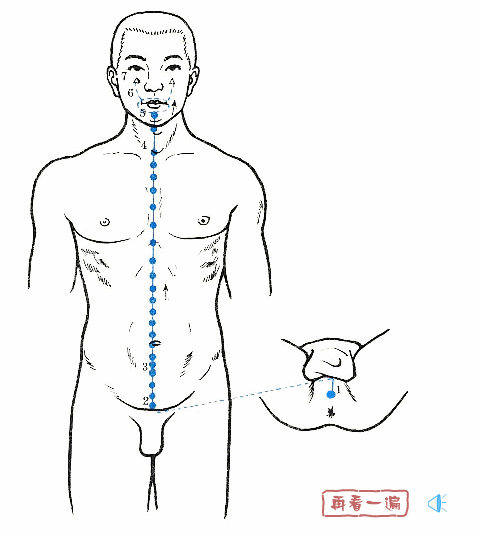
1. Pathway Location
The Ren Mai originates in the uterus, exits at the perineum, ascends along the midline of the abdomen, passes through the throat (Tian Tu point), reaches the inner lower lip, divides to encircle the lips, and intersects with the Du Mai at the Yin Jiao point, then ascends to the lower eye socket (Cheng Qi point), connecting with the Foot Yangming Meridian.
2. Branches
It penetrates the spine from the uterus and ascends along the back.
3. Physiological Functions
(1) Regulates the Qi and blood of the Yin meridians, serving as the “sea of Yin meridians”.
The Ren Mai runs along the midline of the abdomen, which is Yin, indicating its role in overseeing and regulating the Qi of all Yin meridians. Additionally, the three Yin meridians of the foot intersect with the Ren Mai, allowing it to regulate the Qi and blood of the Yin meridians, hence the saying “oversees all Yin”.
(2) Regulates menstruation and supports fetal development.
The Ren Mai originates in the uterus, thus it plays a role in regulating menstruation and promoting female reproductive functions, hence the saying “Ren governs the uterus”.
Du Mai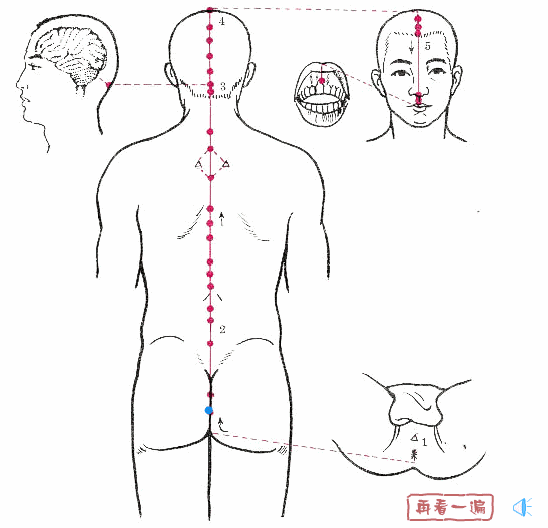
1. Pathway Location
The Du Mai originates in the lower abdomen, exits at the perineum, travels to the tailbone (Chang Qiang point), ascends along the spine, passes through the neck to the Feng Fu point, enters the brain, belongs to the brain, runs along the midline of the head, ascends to the Bai Hui point at the top of the head, descends through the forehead to the Su Liao point at the tip of the nose, passes through the philtrum, and reaches the Yin Jiao point at the center of the upper teeth.
2. Branches
The first branch, along with the Chong and Ren meridians, originates in the uterus, exits at the perineum, and meets the Kidney Meridian and the Bladder Meridian at the tailbone, penetrating the spine and belonging to the kidneys.
The second branch ascends directly from the lower abdomen through the navel, reaches the heart, meets the Chong and Ren meridians at the throat, descends to the jaw, encircles the lips, and reaches the center below the eyes.
The third branch originates from the inner canthus of the eye, ascends to the forehead, meets at the top of the head, connects to the brain, then descends from the nape, along the inner scapula, and reaches the lumbar region, entering the muscles on both sides of the spine, connecting with the kidneys.
3. Physiological Functions
(1) Regulates the Qi and blood of the Yang meridians, serving as the “sea of Yang meridians”.
The Du Mai runs along the back, which is Yang, indicating its role in overseeing and regulating the Qi of all Yang meridians. Additionally, all six Yang meridians intersect with the Du Mai at the Da Zhui point, thus it regulates the Yang meridians, hence the saying “oversees all Yang meridians”.
(2) Reflects the functions of the brain, kidneys, and spinal cord.
The Du Mai belongs to the brain and connects with the kidneys. The kidneys produce marrow, and the brain is the sea of marrow. The relationship between the Du Mai, brain, kidneys, and spinal cord is very close.
(3) Governs reproductive functions.
The Du Mai connects with the kidneys, which govern reproduction, thus it is related to reproductive functions.
Chong Mai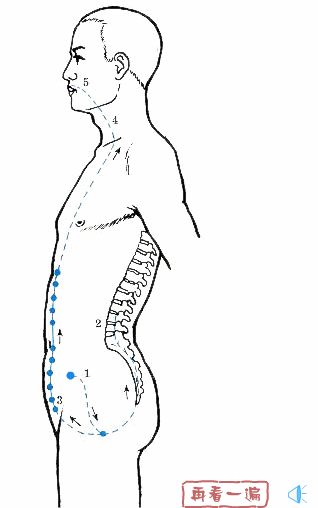
1. Pathway Location
It originates in the uterus, exits at the perineum, and divides into two branches.
The ascending branch (the main part of the Chong Mai) runs along the anterior abdominal wall near the navel (five fen beside the navel), merges with the Foot Shaoyin Meridian, spreads in the chest, then ascends through the throat, encircling the lips; the descending branch runs along the posterior abdominal wall, ascending within the spine.
2. Physiological Functions
(1) Regulates the Qi and blood of the twelve primary meridians.
The Chong Mai ascends to the head and descends to the feet, traversing the entire body, serving as a crucial point for overseeing the Qi and blood of all meridians. When the Qi and blood of the meridians and organs are excessive, the Chong Mai can store and reserve it; when there is a deficiency, it can provide infusion and supplementation to maintain the normal physiological activities of the body’s tissues and organs. Thus, it is referred to as the “sea of the twelve meridians”, “sea of the five organs and six bowels”, and “sea of blood”.
(2) Governs reproductive functions.
The Chong Mai originates in the uterus, also known as the “blood chamber” or “sea of blood”. It plays a role in regulating menstruation. The Chong Mai is closely related to reproductive functions; for women, “when the Chong Mai is abundant, menstruation occurs regularly, leading to conception”. Conversely, if the Chong Mai is deficient, it can lead to reproductive dysfunction.
(3) Regulates the ascending and descending of Qi mechanisms.
The Chong Mai connects with the Foot Shaoyin, belongs to the Yangming, and communicates with the Jueyin and Taiyang. It has the function of regulating the ascending and descending Qi mechanisms of certain organs (mainly the liver, kidneys, and stomach).
Dai Mai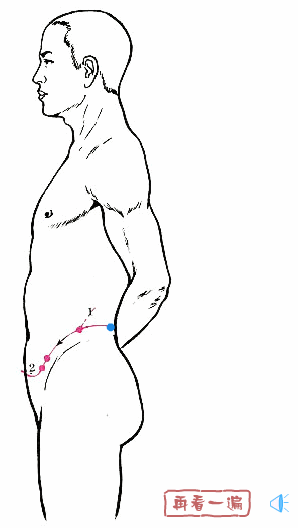
1. Pathway Location
The Dai Mai originates at the lateral costal region, descends obliquely, and intersects with the Dai Mai point of the Foot Shaoyang Gallbladder Meridian, encircling the body and then descending along the upper edge of the hip bone to the lower abdomen.
2. Physiological Functions
It restrains the longitudinal flow of all meridians and governs women’s leukorrhea.
Yin Qiao Mai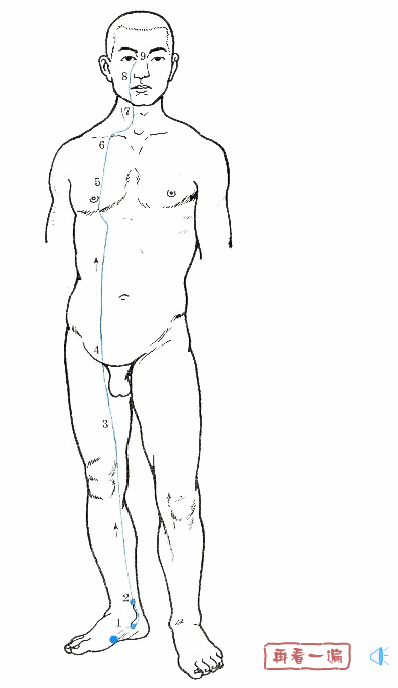
1. Pathway Location
The Yin Qiao Mai originates at the inner side of the heel from the Zhaohai point of the Foot Shaoyin Meridian, ascends through the inner ankle, along the inner thigh to the anterior genital area, and ascends along the anterior surface of the trunk to the chest, reaching the Xue Pen point, then ascends beside the Adam’s apple to the Ren Mai’s Tian Tu point, and finally reaches the side of the nose, connecting with the inner canthus of the eye, and ascends with the Foot Taiyang and Yang Qiao Mai.
2. Physiological Functions
It controls the opening and closing of the eyes and the movement of the muscles.
Yang Qiao Mai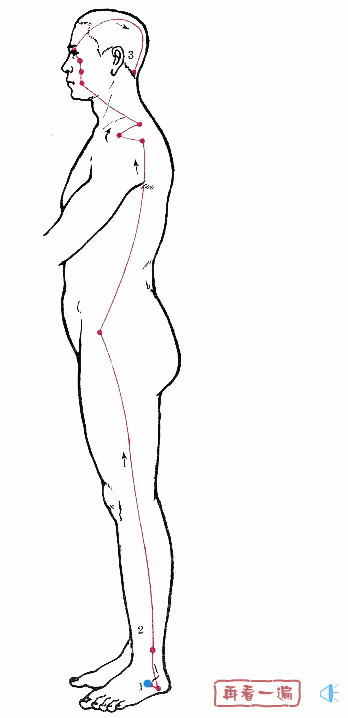
1. Pathway Location
The Yang Qiao Mai originates at the outer side of the heel from the Shen Mai point of the Foot Taiyang Meridian, ascends along the outer ankle, and travels up the outer edge of the lower limb to the abdomen. It runs along the posterior lateral side of the chest, through the shoulder, and along the outer side of the neck, reaching the corner of the mouth, then ascends to the inner canthus of the eye. It connects with the Foot Taiyang Meridian and the Yin Qiao Mai, then ascends along the Foot Taiyang Meridian to meet the Foot Shaoyang Meridian at the Feng Chi point behind the neck.
2. Physiological Functions
It controls the opening and closing of the eyes and muscle movement.
Yin Wei Mai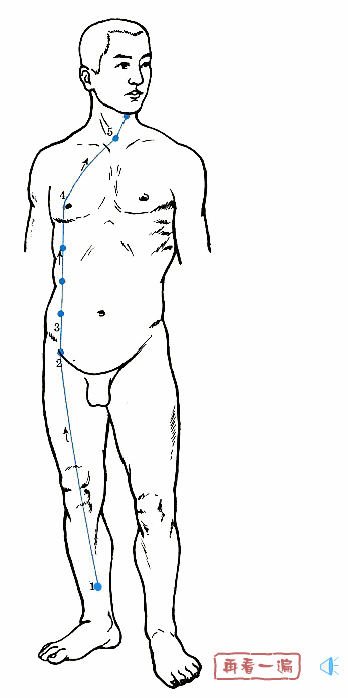
1. Pathway Location
The Yin Wei Mai originates five cun above the inner ankle from the Zhu Bin point of the Foot Shaoyin Meridian, ascends along the inner edge of the lower limb, reaches the abdomen, and travels alongside the Foot Taiyin Spleen Meridian to the lateral costal region, connecting with the Foot Jueyin Liver Meridian, then ascends to meet the Tian Tu point of the Ren Mai, terminating at the Lian Quan point in the throat.
2. Physiological Functions
The term “Wei” in Wei Mai implies connection and linking. The Yin Wei Mai serves to connect the Yin meridians.
Yang Wei Mai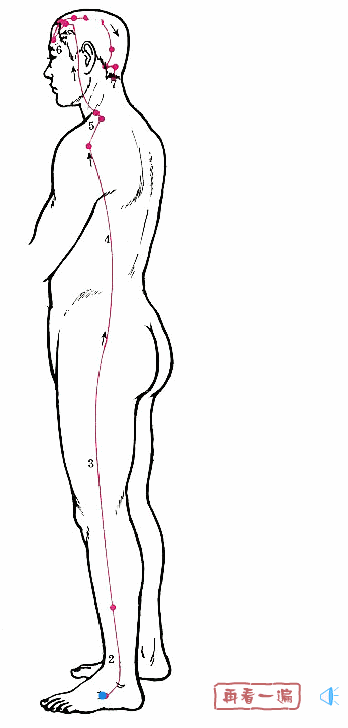
1. Pathway Location
The Yang Wei Mai originates from the Jin Men point of the Foot Taiyang Meridian, passes over the outer ankle, ascends along the outer edge of the lower limb, travels through the posterior lateral side of the trunk, from the back of the armpit to the shoulder, ascends through the neck and behind the ear, moving forward to the forehead, distributing along the side of the head and back of the neck, connecting with the Du Mai.
2. Physiological Functions:It connects the Yang meridians.
Eight Representative Acupuncture Points
Among the Eight Extraordinary Meridians, there are eight representative acupuncture points: Gong Sun, Nei Guan, Lin Qi, Wai Guan, Shen Mai, Hou Xi, Lie Que, and Zhao Hai.
These eight points are located at the intersections of our twelve primary meridians and the Eight Extraordinary Meridians, enhancing the connections and intersections between the twelve primary meridians and the Eight Extraordinary Meridians. They can be considered as switches to open the Eight Extraordinary Meridians, achieving the goals of disease treatment and health preservation.
The eight meeting points are often used in pairs in clinical practice, allowing for holistic regulation of the body and reducing the inconvenience caused by an inability to differentiate syndromes.

